Japanese Lunch
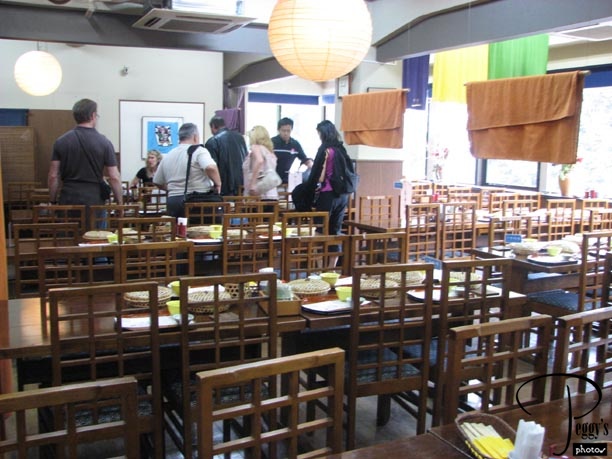
We had our lunch at a nearby Japanese restaurant.

Japanese Lunch
Japanese Lunch
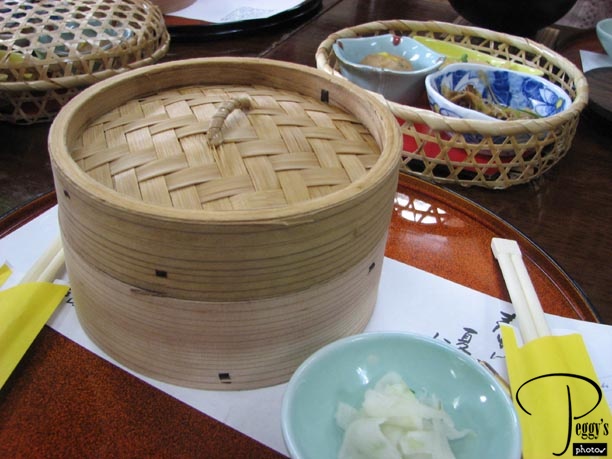
Rice was served in the large basket.

Japanese Lunch
Japanese Lunch
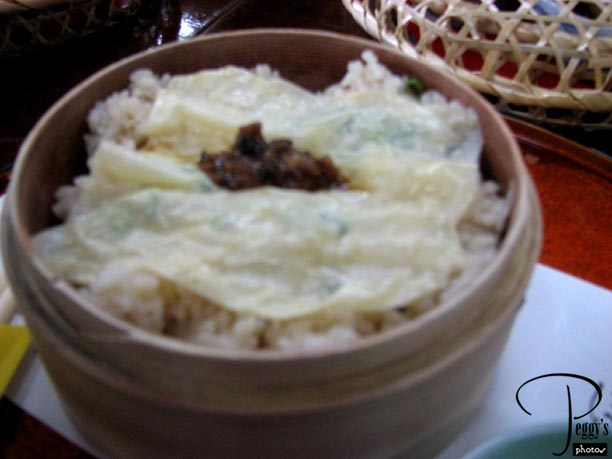
Opened basket: rice with scallions, soy beans, milk, etc. It was tasty, even the stuff on the top of the rice.

Japanese Lunch
Japanese Lunch
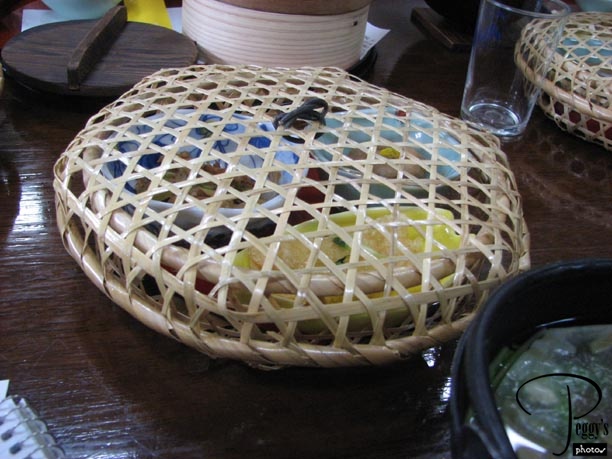
Second basket.

Japanese Lunch
Japanese Lunch
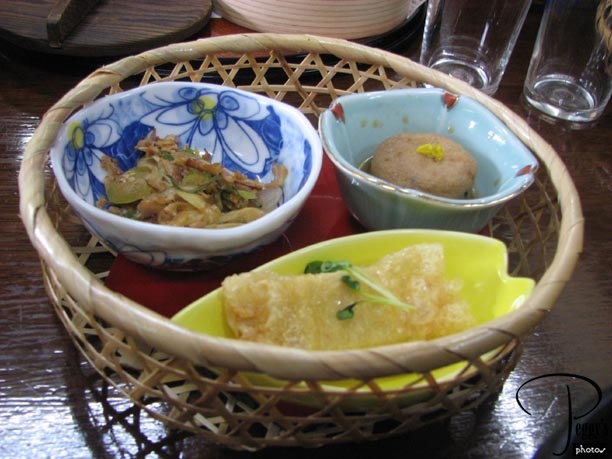
Opened basket: chicken and soybeans mixed with vegetables, frozen tofu (in the yellow dish), and something in the blue dish to the right that I didn’t like. The chicken was good and the frozen tofu surprisingly tasty. Also served were pickled radishes, which I found out that I really liked.

Japanese Lunch
Japanese Lunch
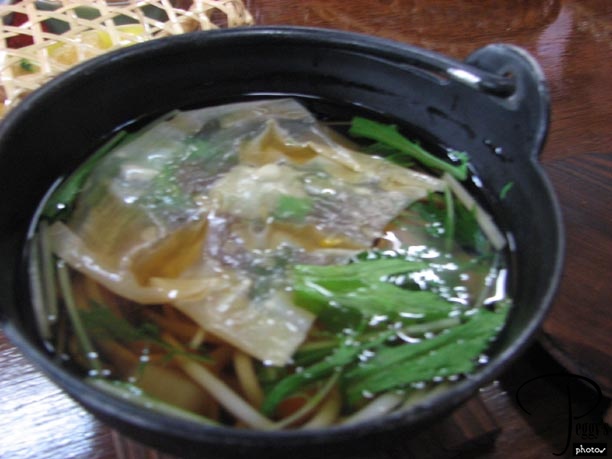
Soup with whatever it was on top was tasty but mild. The young Chinese American male from San Francisco on our tour sprinkled ground hot pepper on his soup. I did the same and went into a really bad coughing fit, so bad I had to leave the table and then drink two full glasses of water after I stopped coughing. I really wanted to finish my frozen tofu, but was afraid to eat anymore. We also were served green tea with our meal. Japanese food: If you like sushi and sashimi and/or you like to try new foods and don’t care that you probably won’t know what you are eating, you will be in food heaven in Japan. The less expensive restaurants put sample plates and/or photos of the meals served in their establishments. I have put samples of these on a slide show on this website: go to Slide Shows, Japan, “Japan: Restaurant Food.” You may also be interested in the raw and packaged food you can buy in Japan and I have put photos of such various items on another slide show on this website: Go to Slide Shows, Japan, “Japan: Raw and Packaged Food.”

Japanese Lunch
Rickshaw Ride
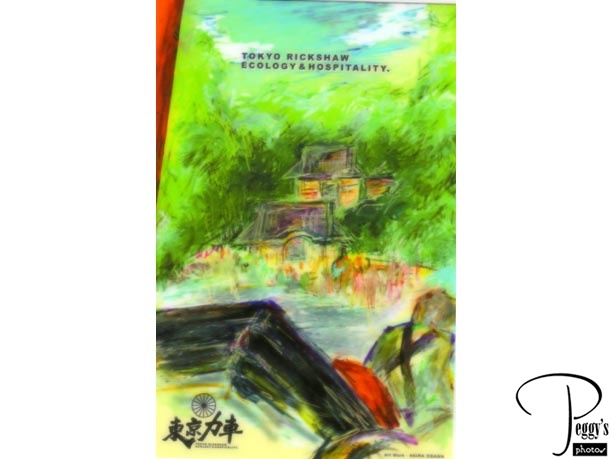
After lunch, I was the only one of our group to sign up for a rickshaw ride. And since I was the only one, I felt very embarassed when I first got in the rickshaw, but as we passed more rickshaws, I felt better. The rest of my tour group walked back to the train station via the shopping street to take a train to our next place to visit. Photo: I have scanned in one of the postcards that my rickshaw driver gave me.

Rickshaw Ride
Rickshaw Ride
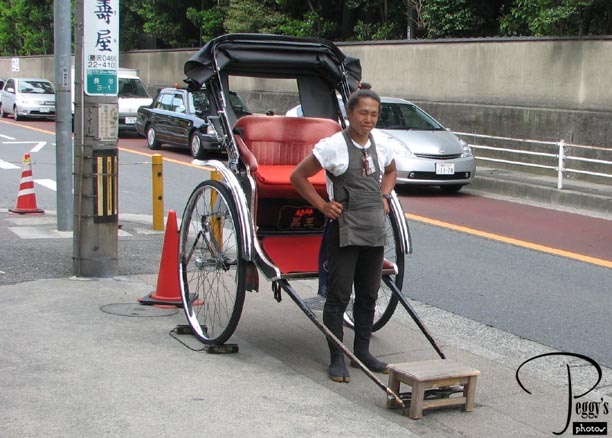
My rickshaw and rickshaw driver. My driver could speak little English but he had printed in English explanations of what we were passing. I had pictured being on a special rickshaw route, but we rode in traffic, had to wait for traffic lights, and took small side streets to our destination. This was my first rickshaw ride. I have put my rickshaw ride on a slide show on this website: Go to Slide Shows, Asia, Japan, “Kamakura: Rickshaw Ride.” The rickshaw ride was very smooth.

Rickshaw Ride
Tsurugaoka Hachimangu Shinto Shrine
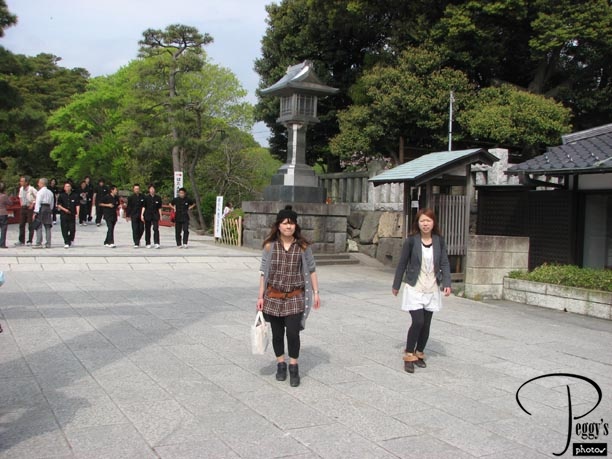
After my rickshaw ride, Hanuko met me at the entrance to the Tsurugaoka Hachimangu Shinto Shrine, Kamakura’s most important shrine. The shrine was founded in 1063 by Minamoto Yoriyoshi and moved in 1180 to it present location by Minamoto Yoritomo, Japan’s first shogun. The shrine is dedicated to Hachiman, the god of war and the patron god of the Minamoto family and of the sumurai (Japanese warriors).

Tsurugaoka Hachimangu Shinto Shrine
Tsurugaoka Hachimangu Shinto Shrine
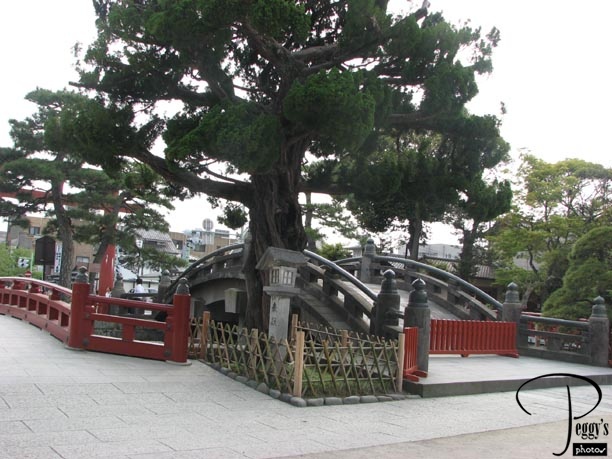
Arched bridge at the shrine.

Tsurugaoka Hachimangu Shinto Shrine
Tsurugaoka Hachimangu Shinto Shrine
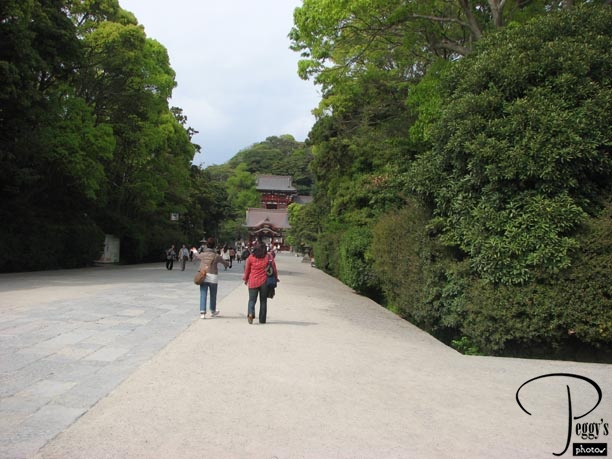
Walking to the shrine.

Tsurugaoka Hachimangu Shinto Shrine
Tsurugaoka Hachimangu Shinto Shrine
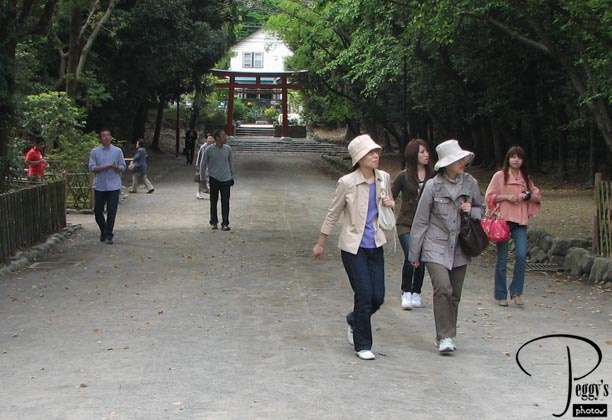
There are several entrances to the shrine––one (the Dankazura) is lined with 310 cherry trees plus azaleas. I don’t know if this is a photo of the Dankazura, which must be spectacular when the cherry trees are in bloom, but you can see a torii at the end of the lane.

Tsurugaoka Hachimangu Shinto Shrine
Tsurugaoka Hachimangu Shinto Shrine
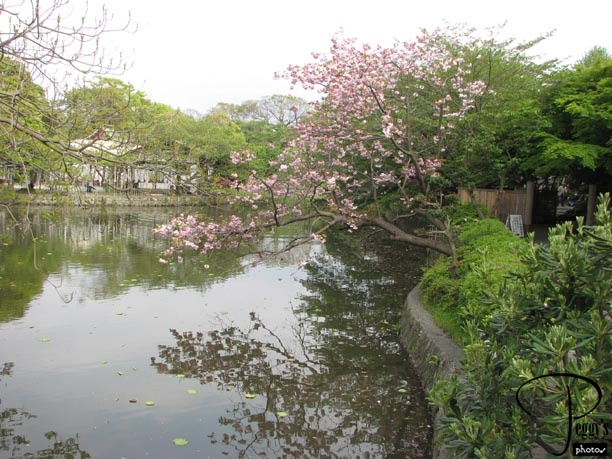
There are two lotus ponds at the shrine, called the Genpei Ponds.

Tsurugaoka Hachimangu Shinto Shrine
Tsurugaoka Hachimangu Shinto Shrine
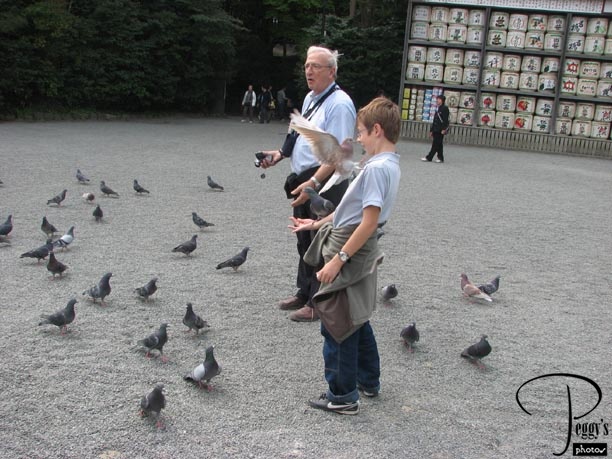
Feeding the pigeons––a bit of Venice here.

Tsurugaoka Hachimangu Shinto Shrine
Tsurugaoka Hachimangu Shinto Shrine
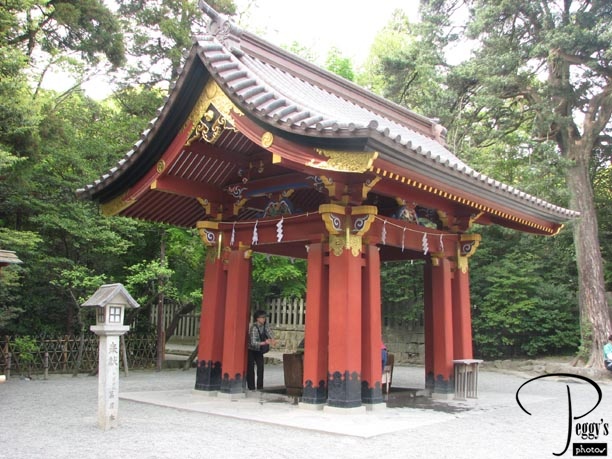
The colorful temiuya.

Tsurugaoka Hachimangu Shinto Shrine
Tsurugaoka Hachimangu Shinto Shrine
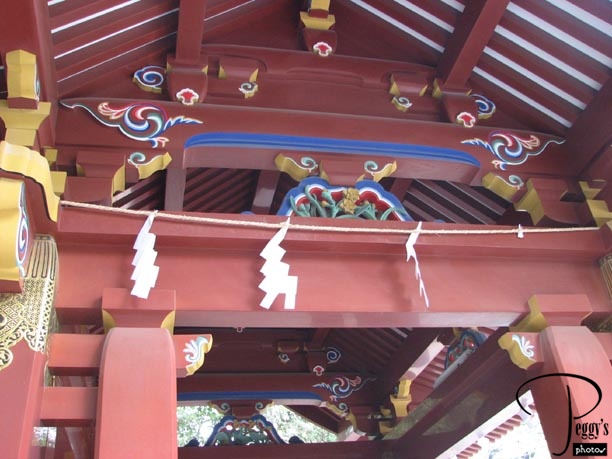
Inside the temiuya.

Tsurugaoka Hachimangu Shinto Shrine
Tsurugaoka Hachimangu Shinto Shrine
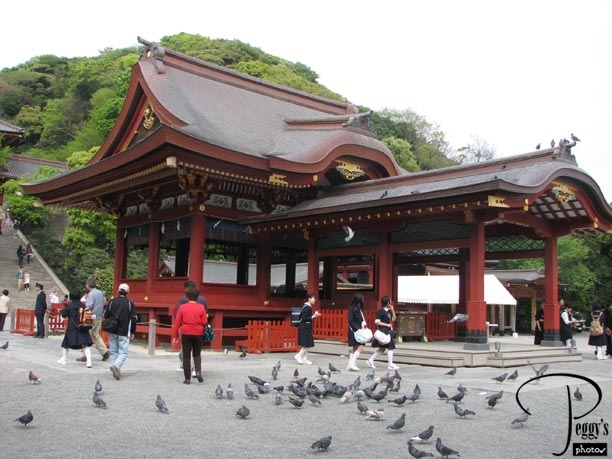
The Maiden or Ritual Dance Stage.

Tsurugaoka Hachimangu Shinto Shrine
Tsurugaoka Hachimangu Shinto Shrine
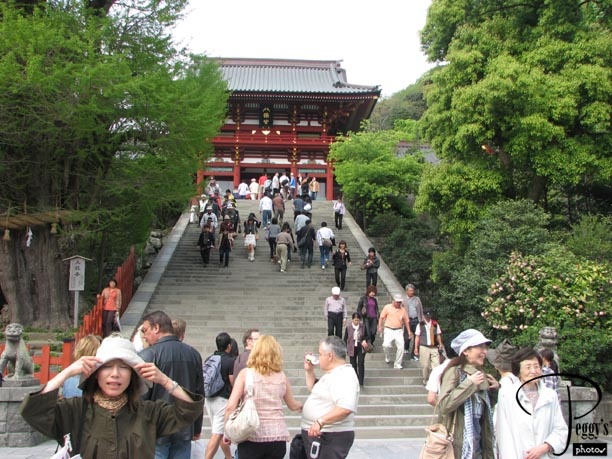
There are 61 steps up to the Main Temple and no railing.

Tsurugaoka Hachimangu Shinto Shrine
Tsurugaoka Hachimangu Shinto Shrine
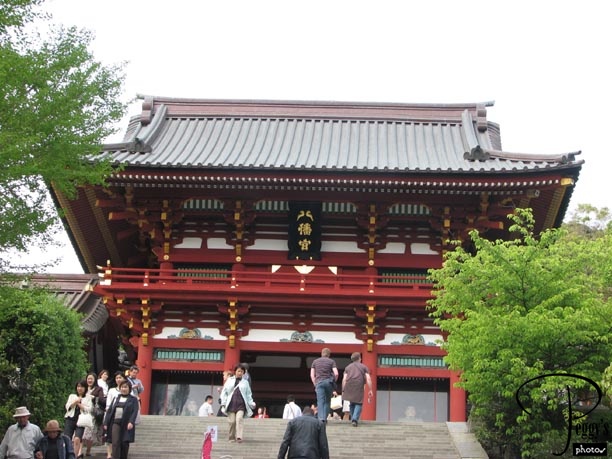
I decided to forego walking up all those steps with nothing to hang onto, so I took this close–up photo from down below.

Tsurugaoka Hachimangu Shinto Shrine
Tsurugaoka Hachimangu Shinto Shrine
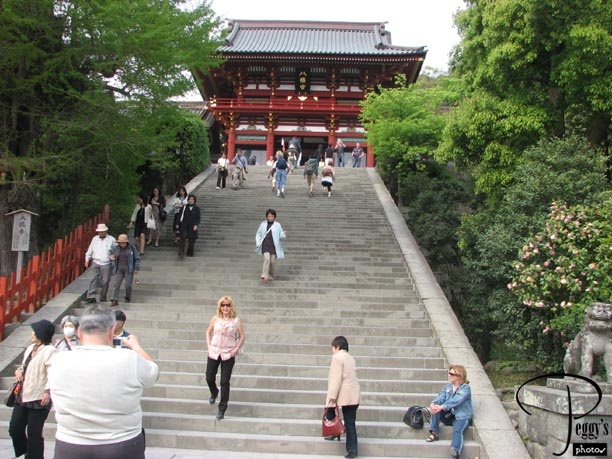
Another view of the Main House. Note the dogs on either side of the steps––dogs are a symbol of a Shinto shrine. On the left you can see an over 1000–year–old ginko tree.

Tsurugaoka Hachimangu Shinto Shrine
Tsurugaoka Hachimangu Shinto Shrine
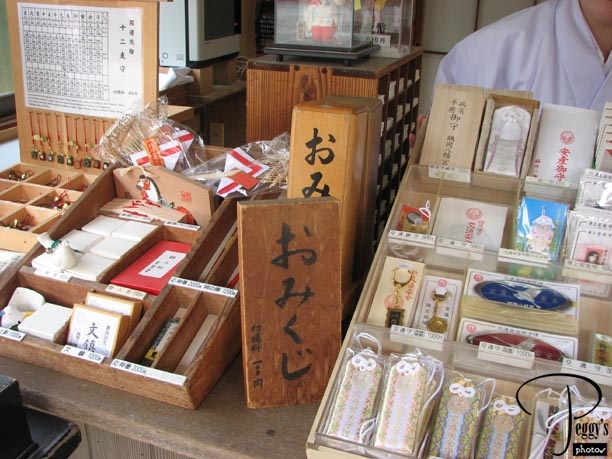
Havings my fortune told. You pay about 500 yen to shake the wooden box. Out pops three sticks with single numbers on them. These numbers are matched to an “omikuji”––a fortune paper. Hanuka thought I would be given an omikuji in English but this booth only had Japanese language ones. Hanuku read part of my fortune: I was to have low to medium luck. I forgot to ask her later, when she had more time, to read the rest of my fortune––it gets quite involved. Anyway, low to medium luck did not sound very good.

Tsurugaoka Hachimangu Shinto Shrine
Tsurugaoka Hachimangu Shinto Shrine
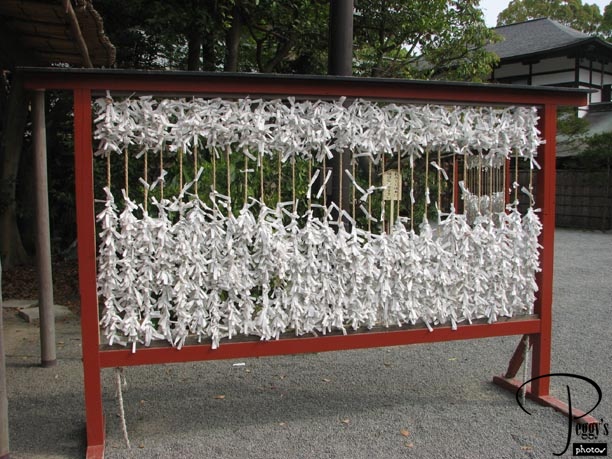
If you don’t like your fortune, you can hang it on these strings, asking, therefore, for better luck. I took my omikuji with me––sometime I will find someone to read it to me or else just wait to get another omikuji sometime in the future that will tell me I will have great luck.

Tsurugaoka Hachimangu Shinto Shrine
Tsurugaoka Hachimangu Shinto Shrine
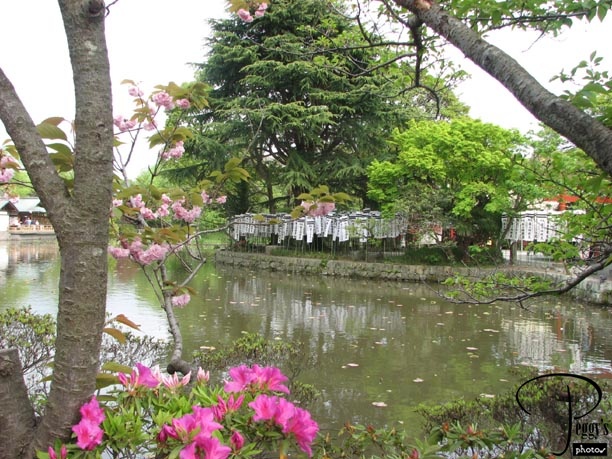
A view of the Genpei Ponds.

Tsurugaoka Hachimangu Shinto Shrine
Tsurugaoka Hachimangu Shinto Shrine
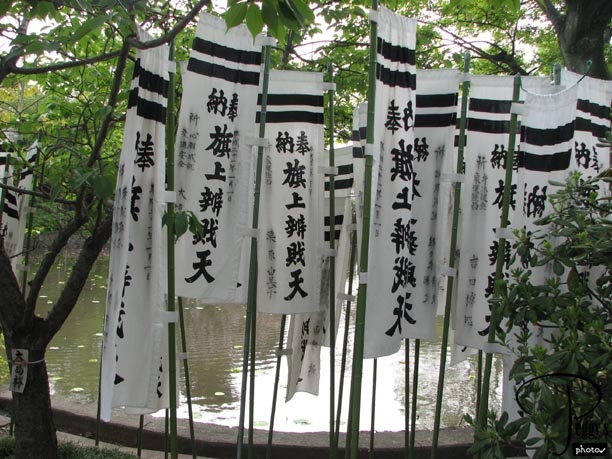
Family banners of those who have donated to the shrine.

Tsurugaoka Hachimangu Shinto Shrine
Tsurugaoka Hachimangu Shinto Shrine
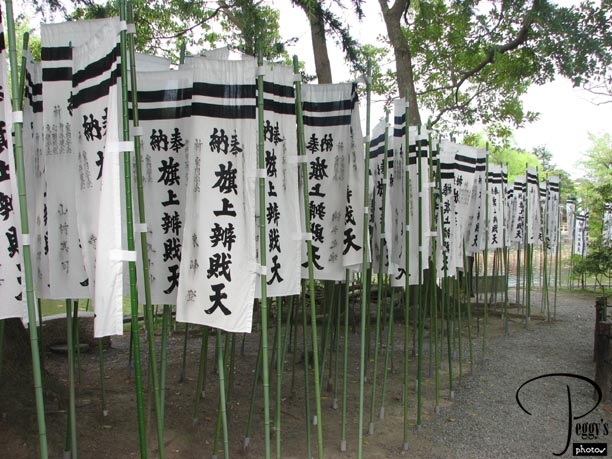
More of the banners.

Tsurugaoka Hachimangu Shinto Shrine
Tsurugaoka Hachimangu Shinto Shrine
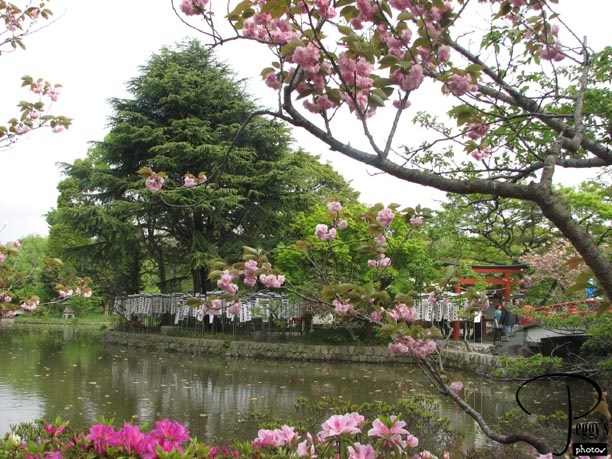
Another view of the Genpei Ponds.

Tsurugaoka Hachimangu Shinto Shrine
Tsurugaoka Hachimangu Shinto Shrine
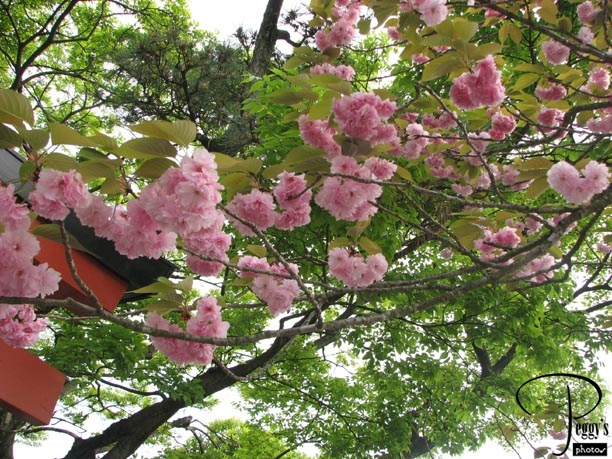
Cherry blossoms.

Tsurugaoka Hachimangu Shinto Shrine
Tsurugaoka Hachimangu Shinto Shrine
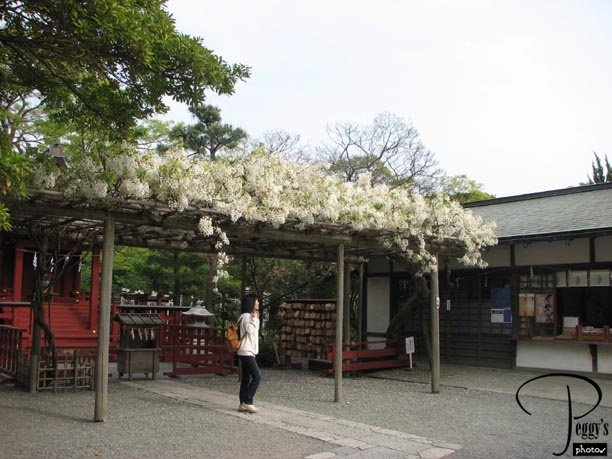
Beautiful wisteria.

Tsurugaoka Hachimangu Shinto Shrine
Komachi Shopping Street
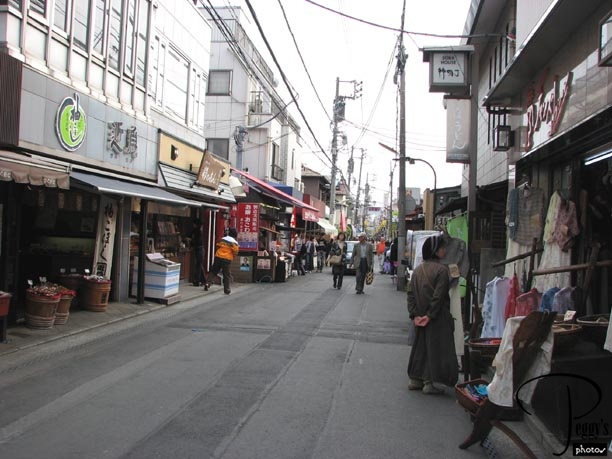
After leaving the Tsurugaoka Hachimangu Shinto Shrine, we had time to walk along the Komachi Shopping Street.

Komachi Shopping Street
Komachi Shopping Street
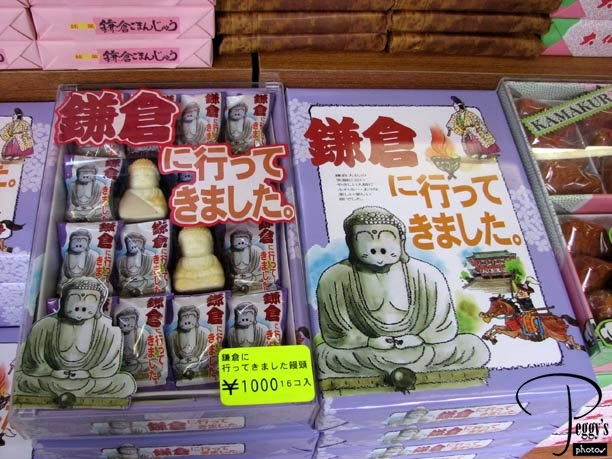
Many packages of Japanese sweets were being sold here. The sweets and their packaging are really works of art. I have put the ones I saw in Kamakura as well as in other places on a slide show on this website: Go to Slide Shows, Japan, “Japan: Sweets.” I wish that more samples of the sweets were available so I could decide what packages to buy. But many of the ones that I did get to try were overly sweet and I think these are to have when drinking bitter green tea. I brought some candy home with me and some were overly sweet and some were not sweet enough. But the one that I really liked, that I ate when I got home, was the powdered green tea cakes with creme inside––they were delicious. I wish I knew this when I was in Japan. Now I will have to go to LA’s Little Tokyo to see if I can find powdered green tea cakes there.

Komachi Shopping Street
Komachi Shopping Street
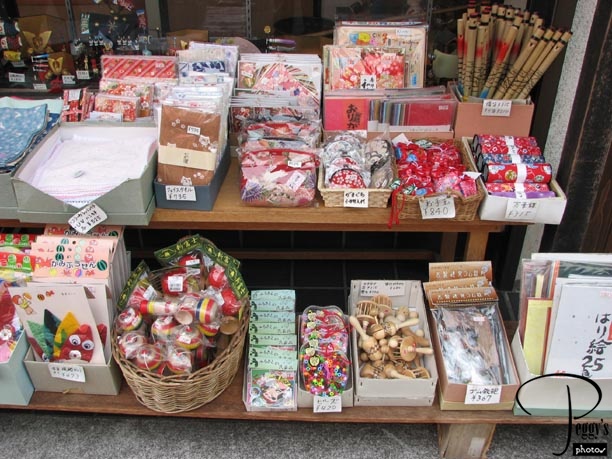
Many of the stores on this street were selling Japanese souvenirs. I have put my photos of souvenirs that were being sold on this street as well as on other streets on a slide show on this website: Go to Slide Shows, Japan, “Japan: Shopping.”

Komachi Shopping Street
Back to Tokyo
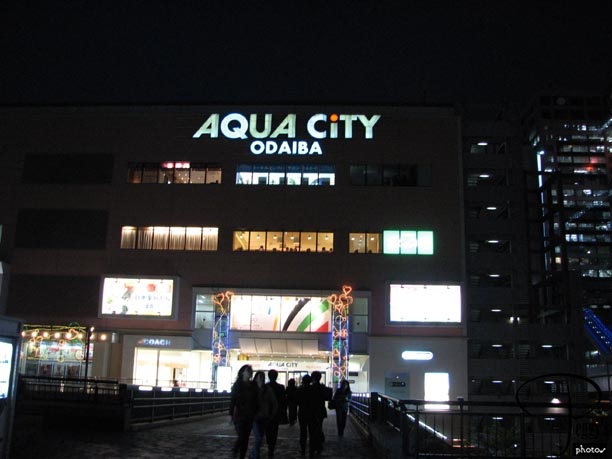
We took the train from Kamakura from the JR Kamakura Station to Tokyo Station. Then Hanuko put us on the right subways to get back to our hotels. I got off at Shimbashi Station, bought some donuts for tomorrow’s breakfast there, and then took the Yurikamome Monorail back to my hotel. I ate dinner this evening at Aqua City across the promenade from my hotel.

Back to Tokyo
On the Island of Odaiba
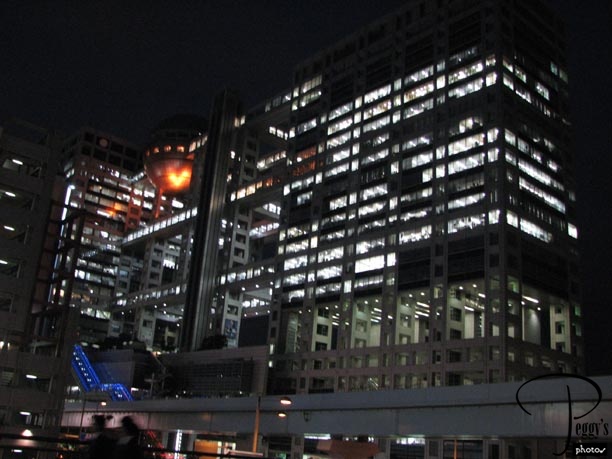
I hadn’t taken a photo before of the Fuji–TV building across the street from Aqua City. It is one of many futuristic buildings on Odaiba. I’ll put photos of it in the daytime here later.

On the Island of Odaiba
Aqua City
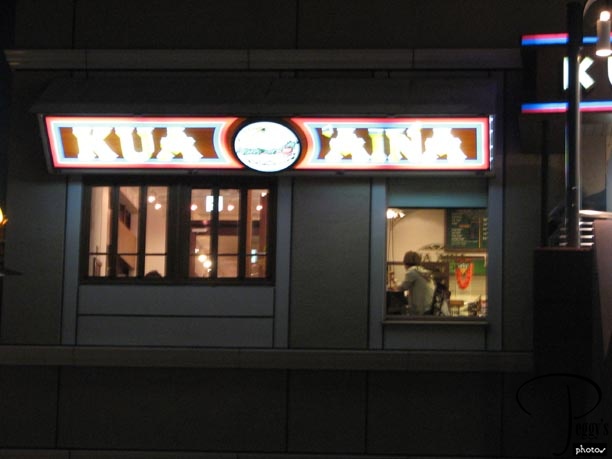
After my near disaster when eating my Japanese lunch today, I decided to be safe and have good old American food today at the Kua ‘Aina Hawaiian restaurant––that is, I had a cheeseburger, french fries, onion rings and a coke. Other than hamburgers, the Kua ‘Aina restaurant serves toasted sandwiches, salads, clam chower, popcorn shrimp, chicken nuggets, organic hot coffee, caffe latte, and Kona beer.

Aqua City
Kua ‘Aina
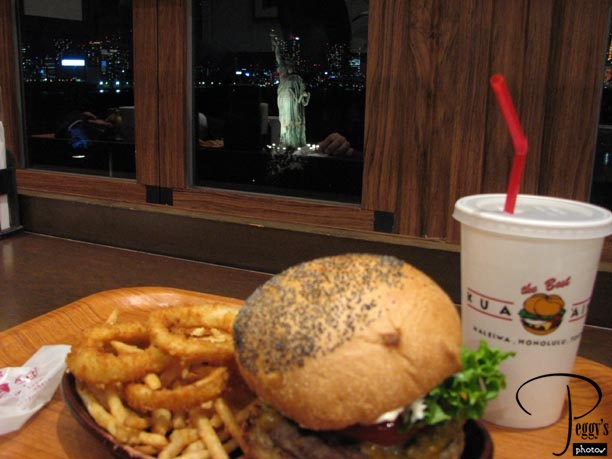
These were the very best French fries and onion rings that I have ever had and to think that I had to go to Japan to have them. The hamburger was very good as well and I ate while looking at the Statue of Liberty through the window. English–language music was being played. All the customers at the restaurant were Japanese except for me. Cost for dinner: 1270 yen, the view not extra.

Kua ‘Aina
Odaiba
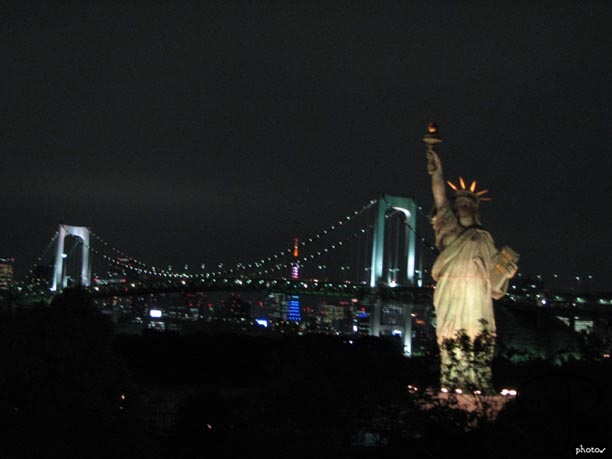
I walked back from Aqua City past my favorite view of Tokyo. The end of a very interesting, good day.
